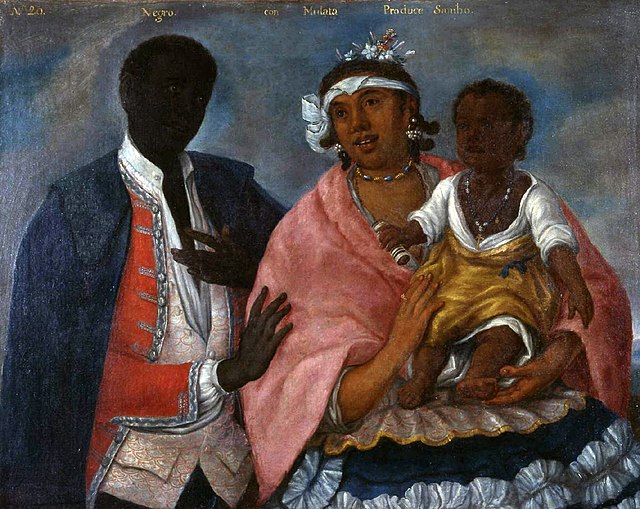Zambo or Sambu is a racial term historically used in the Spanish Empire to refer to people of mixed Amerindian and African ancestry. Occasionally in the 21st century, the term is used in the Americas to refer to persons who are of mixed African and Indigenous American ancestry.
16th-century painting of Zambo caciques from Esmeraldas, Ecuador
A representation of an infant zambo, in an 18th-century "Pintura de Castas" from New Spain. The painting illustrates "from an African and an Amerindian produces a lobo", here a synonym for zambo.
Casta painting showing 16 hierarchically arranged, mixed-race groupings. Row 2, extreme right cell, shows the torna atrás father, Indian mother, and Lobo or Zambo offspring.Ignacio Maria Barreda, 1777. Real Academia Española, Madrid.
"From a black man with a mulata produces a Sambo," Indian school, 1770.
The Garifuna people are a people of mixed free African and Amerindian ancestry that originated in the Caribbean island of Saint Vincent and speak Garifuna, an Arawakan language, and Vincentian Creole.
Black Carib family in Saint Vincent
Depiction of the 1773 treaty negotiations between the British and the Black Caribs
Joseph Chatoyer, the chief of the Black Caribs in St. Vincent, in an 1801 engraving.
Garifuna parade on San Isidro Day, in Livingston (Guatemala)








